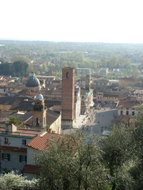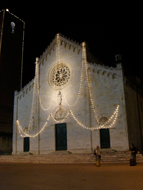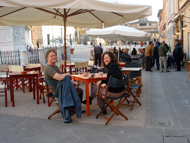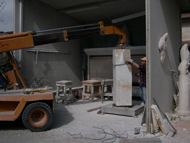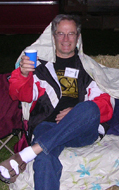Elders Rock! Sept/Oct 2007
- Details
- Created: Saturday, 01 September 2007 21:38
For the first time, the Northwest Stone Sculptors Association International Symposium 2007 hosted an Elderhostel program, “Introduction to Stone Sculpting: A Hands-on Workshop.” While the group was much smaller than hoped for, only four, the enthusiasm was HUGE. Each of the four had lots to say about the experience.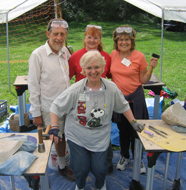
Cathleen Wood, a recently-retired elementary school art teacher, dove right in with joy and determination. She tried every available technique, going home with a nearly completed piece plus three more stones, and tools on order.
Peter Gritt, 72, is a Port Townsend WA artist, retired from the Hollywood film industry. He came to the workshop curious to explore a medium very different from his usual fabric art installations. Peter addressed his stone with humor and vision and even incorporated a found object into the piece. He especially enjoyed the Sculpture Garden as “inspirational.”
Alice Dworkin is a clinical social worker in a southern California hospital, who has always created art in spite of a hectic schedule. Looking forward to retirement in a year or two, Alice wants to focus more on art, and loved the feel of working in stone. She came away with a dramatic piece, interesting from all angles, and tools coming to continue the work. She also reported she “hasn’t laughed so hard in ages”.
Jenina Deshler, 66, a psychotherapist in private practice in Seattle, came because Alice (a friend from graduate school on) said “don’t argue, just send in your check.” She had no expectation other than “an adventure” and fun. The emergence of “something in the stone” was a complete and delightful surprise.
All four participants were VERY appreciative of their teachers, Tracy Powell and Tamara Buchanan both of whom were attentive while not hovering, generous and funny and only strict when it came to safety. Their expertise is phenomenal and their attitude allowed the “newbies” to feel welcomed as potential colleagues and not a bunch of thumb-bangers. In addition to the blessing of these two wonderful teachers, were the other sculptors attending the Symposium. Each one was generous with his/her time and welcomed conversation and participation. The impromptu talk by the “stone guy” (Randy Zieber) really brought the stones to life.
It did indeed feel like one was in the presence of real elders. The workshop ELDERS agreed among themselves that they had never been with such a generous, unpretentious, and deliciously irreverent group. One quipped, “I will join the Association just so I can say I belong to this great group!”
It is easy to see why Camp Brotherhood has been the home of this summer Symposium for so many years. The accommodations were pleasant, the food very good (with the exception of frozen vegetables), the staff was attentive, and the field work-setting almost magical even with the rain and noise. The four ELDERS will hold this experience as one of the best and will make sure the Elderhostel program mavens support future workshops with this group. To ALL of you from ALL of us, thank you.


